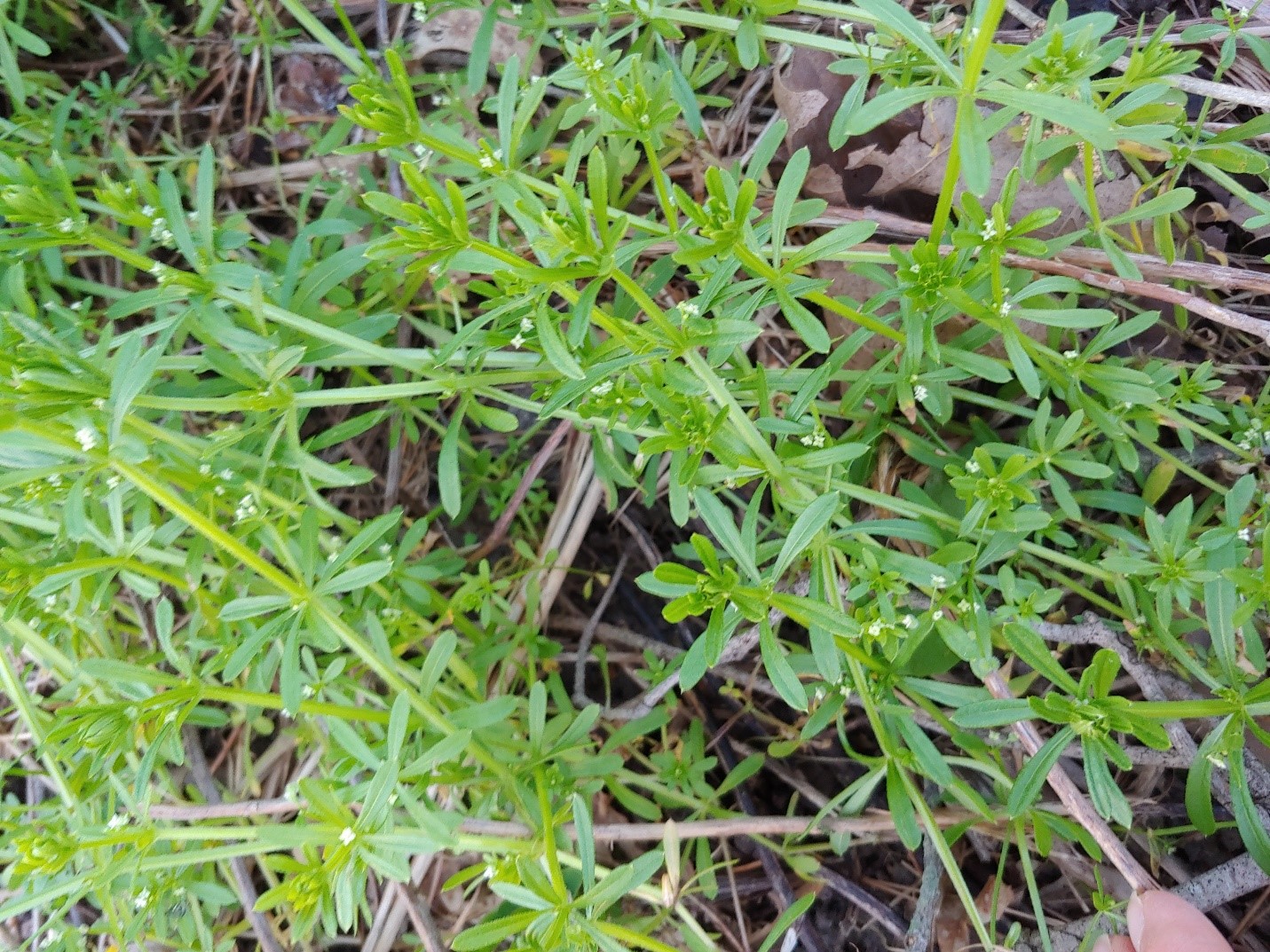Issue 4, May 31, 2019
Catchweed Bedstraw is Catching On to a Landscape near You
I’m starting to see more and more catchweed bedstraw lately, which saddens me. Sure, it has somewhat of a cute appearance. But once you’ve hand pulled an unwanted, sticky patch of it, you will forever have a disdain for this plant.
Catchweed bedstraw (Galium aparine) is an annual weed with a semi-prostrate habit. The leaves are sessile in whorls of 6-8 at the nodes. The leaf blades are lanceolate in shape. Overall, the plant is fairly hairy or prickly allowing it to “catch” easily on skin, clothing, or fur so that seeds are disseminated. The stems and leaves have recurved prickles. Stems are square shaped and break easily. The upperside of the leaf is hairy. The underside has short prickly hairs. It is recommended that you wear long sleeves and gloves when hand pulling this plant as it can stick to skin and removal from said skin can be painful. Ask me how I know.
It earned the name bedstraw when it was used to minimize matting in mattress filling. This weed may also be known by other names including cleavers, Velcro plant, stickywilly, goose-grass, grip-grass, snatch-grass, and catch-grass. The leaves are narrow, but it’s not a grass at all.
The flowers of catchweed bedstraw are produced in May-June in clusters near the axils of the whorls. They are white with 4 petals and 4 stamens. Flowers can occur in only 8 weeks after germination. The seeds are small (2-3 mm in diameter) and typically covered in small hooks, again to aid in dissemination. Seeds are capable of germinating over an extended period of time. One plant will typically produce 100 to 400 seeds, but occasionally 3,000 or more can be produced according to IPM specialists at the University of California. Seeds can remain viable in the soil for up to three years. Many of the plants I have seen this spring have flowers already. Seeds will be soon to follow, ensuring catchweed bedstaw’s presence for the next few years.
Catchweed bedstraw is found in landscapes, nurseries, small grains, and meadows and commonly found in shaded or wooded areas climbing up over the top of surrounding vegetation. It can be found across North America. However, it appears to be a more serious problem in the Northwestern states.
It can be pulled fairly easily in moist soil as it has short roots. However, the stems can break off, making hand pulling more of a chore. Take advantage of the recent rains we have had so that hand weeding is more effective. Blooming plants should then be discarded so that seed development does not continue. The preemergent herbicide oryzalin can provide fair control of catchweed bedstraw. Postemergent herbicide options include glyphosate, oxyfluorfen, quinclorac, carfentrazone, and diclobenil. This list is not all inclusive but is provided as a starting point. Always be sure to read and follow all label directions. Prevention of seed dispersal is likely the best way to prevent future infestations of this plant.
A similar species is smooth bedstraw (G. mollugo) which is a perennial and is smooth overall except at the leaf margins. Carpetweed has a similar growth habit and leaf arrangement, but the stem is round and it is more branched.

Catchweed bedstraw in bloom

The stems and leaves have recurved prickles

Catchweed bedstraw growing in a landscape bed
Author:
Michelle Wiesbrook